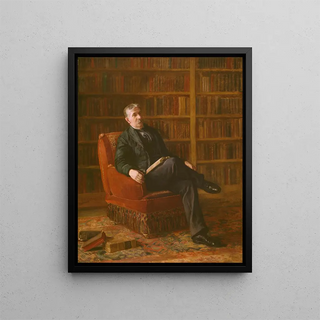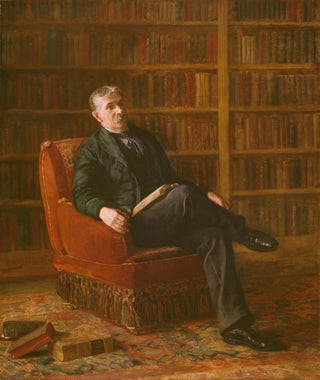Art print | Chevalier Fitzgerald - Thomas Eakins


View from behind

Frame (optional)
Chevalier Fitzgerald Art print - Thomas Eakins – Captivating introduction
In the rich and complex panorama of American art history, the "Chevalier Fitzgerald" art print by Thomas Eakins stands out for its intensity and psychological depth. This painting, which captures the very essence of its subject, bears witness to an era when portraiture was not limited to a simple physical representation but aimed to reveal the soul of the individual. Eakins, with his keen eye and technical mastery, manages to transcend the mere frame of the portrait to offer a reflection on identity and social status. The art print of this iconic work invites viewers to delve into the fascinating universe of art and to appreciate the richness of the emotions it conveys.
Style and uniqueness of the work
Thomas Eakins's style is often characterized by a realistic approach, imbued with academic rigor. In "Chevalier Fitzgerald," this approach is manifested through meticulous attention to detail and careful consideration of light and shadow, which give the subject an almost sculptural dimension. The knight, frozen in a pose that evokes dignity and nobility, is surrounded by a carefully chosen environment, reinforcing the idea of his status. This painting stands out for its rich and nuanced color palette, where each hue seems to vibrate with its own life. Eakins does not merely reproduce reality; he elevates it, transforming it into a visual experience that challenges and fascinates. Thus, the work becomes a mirror, not only of the depicted character but also of the society of its time, inviting reflection on the values and norms that prevail.
The artist and his influence
Thomas Eakins is often regarded as one of the pioneers of realism in America. His academic training, combined with his interest in science and medicine, nourished his artistic approach, leading him to explore various themes such as the human body, movement, and psychology. Eakins established himself as an essential figure, both through his works and his commitment to training future generations of artists. His influence is still felt today, both in the field of painting and in photography, where he has

Matte finish

View from behind

Frame (optional)
Chevalier Fitzgerald Art print - Thomas Eakins – Captivating introduction
In the rich and complex panorama of American art history, the "Chevalier Fitzgerald" art print by Thomas Eakins stands out for its intensity and psychological depth. This painting, which captures the very essence of its subject, bears witness to an era when portraiture was not limited to a simple physical representation but aimed to reveal the soul of the individual. Eakins, with his keen eye and technical mastery, manages to transcend the mere frame of the portrait to offer a reflection on identity and social status. The art print of this iconic work invites viewers to delve into the fascinating universe of art and to appreciate the richness of the emotions it conveys.
Style and uniqueness of the work
Thomas Eakins's style is often characterized by a realistic approach, imbued with academic rigor. In "Chevalier Fitzgerald," this approach is manifested through meticulous attention to detail and careful consideration of light and shadow, which give the subject an almost sculptural dimension. The knight, frozen in a pose that evokes dignity and nobility, is surrounded by a carefully chosen environment, reinforcing the idea of his status. This painting stands out for its rich and nuanced color palette, where each hue seems to vibrate with its own life. Eakins does not merely reproduce reality; he elevates it, transforming it into a visual experience that challenges and fascinates. Thus, the work becomes a mirror, not only of the depicted character but also of the society of its time, inviting reflection on the values and norms that prevail.
The artist and his influence
Thomas Eakins is often regarded as one of the pioneers of realism in America. His academic training, combined with his interest in science and medicine, nourished his artistic approach, leading him to explore various themes such as the human body, movement, and psychology. Eakins established himself as an essential figure, both through his works and his commitment to training future generations of artists. His influence is still felt today, both in the field of painting and in photography, where he has






